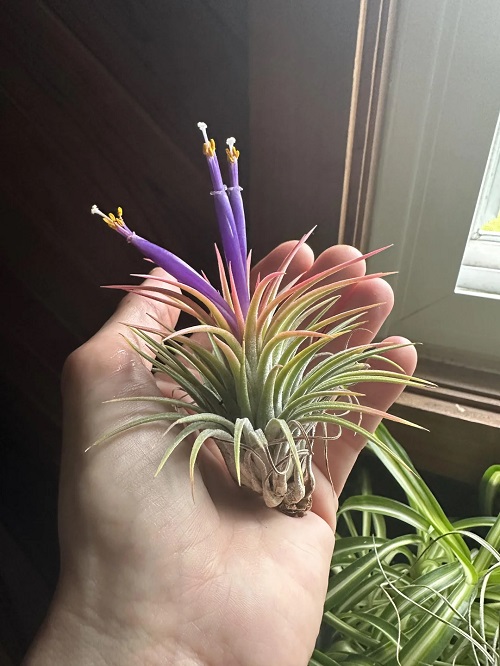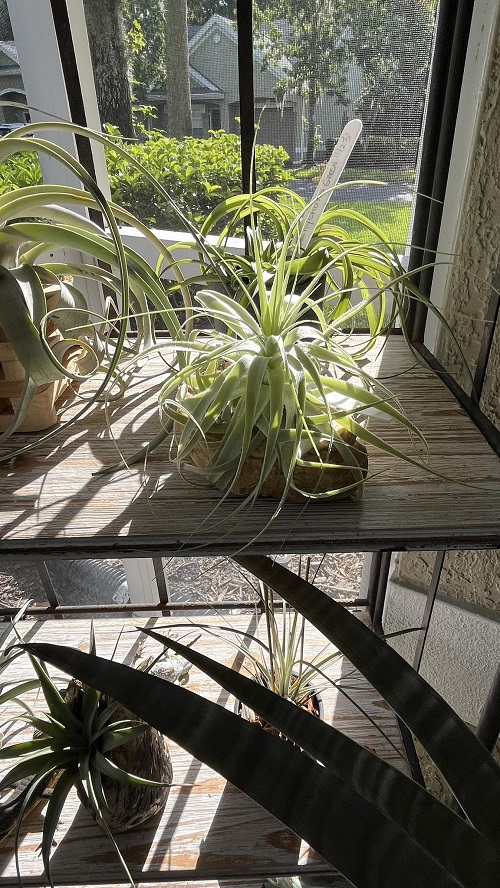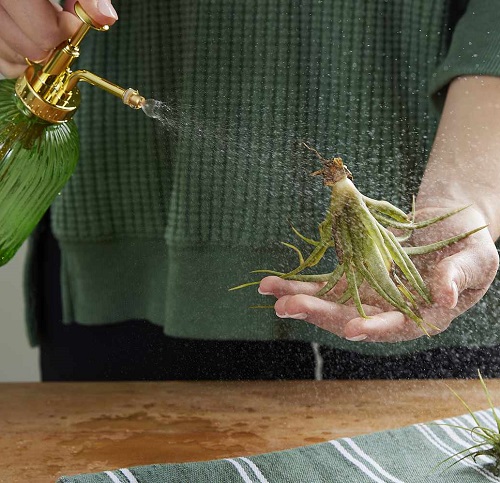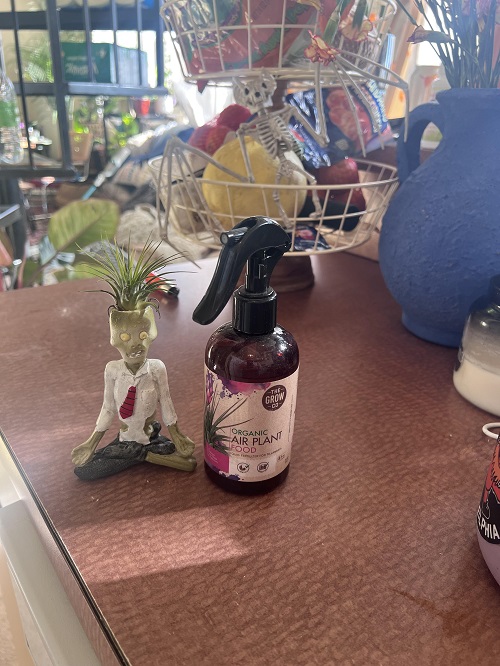Have been growing Tillandsia for a long time, but have never seen flowers? Here’s why your air plant is not blooming and how to reverse that.
Seeing houseplants bloom is always a treat. And while some plants call it quits after flowering, air plants aren’t quitters. They bloom once in their life and then produce pups—baby plants that carry on the legacy. So, if your Tillandsia is all leaves and no flowers, here’s what might be going wrong and how to fix it.
Reasons Why Your Air Plant Is Not Blooming
1. Not Enough Light
Air plants love bright, indirect light. Without at least 6 hours a day, blooming won’t happen. So, place them near an east-facing window where they can soak in gentle morning rays. Avoid dark corners or rooms without windows—they’re a no-go.
If you have no bright spot, then going with a full-spectrum grow light for 8–10 hours can do the trick.
Just watch out for harsh midday sun, which can scorch leaves. Also, use sheer curtains if needed.
2. An Improper Watering Regimen

Soak your plant in room-temperature water for 25–30 minutes once a week. Then shake off extra water and hang it upside down in a breezy spot for 4–6 hours to dry fully—this prevents rot.
Avoid distilled or softened water. Use rainwater, aquarium water, or tap water left out overnight to remove chlorine. These contain minerals your air plant needs to thrive—and bloom.
3. Temperatures Too Low
Air plants are tropical at heart—they like it warm. So, keep the temperature between 85–90°F during the day and never below 45°F.
Watch out for cold drafts or AC blasts. Even quick temperature dips can throw them off and stall blooming.
If needed, move them to a cozier corner.
4. Keep the Humidity High
Warmth and humidity go hand in hand for happy air plants. But indoor air—especially with heating or AC—can get dry.
Mist your plants 2–3 times a week, especially in hot or dry weather.
Here is a pro tip like just cluster your air plants together. They’ll create a mini humid zone that helps everyone thrive.
Some species, like T. xerographica and T. ionantha, are more forgiving—but higher humidity still boosts blooms.
5. Lack of Nutrients
Even though air plants don’t grow in soil, they still benefit from regular feeding—especially if you want them to bloom. Use a bromeliad or air plant-specific fertilizer diluted to a quarter strength, and spray it once or twice a month.
Feeding gives them the extra push they need to produce flowers.
So, these were the five main reasons why your air plant may not have been blooming and how you can fix it. Try these out and let us know how your air plants fare in the comments below!





